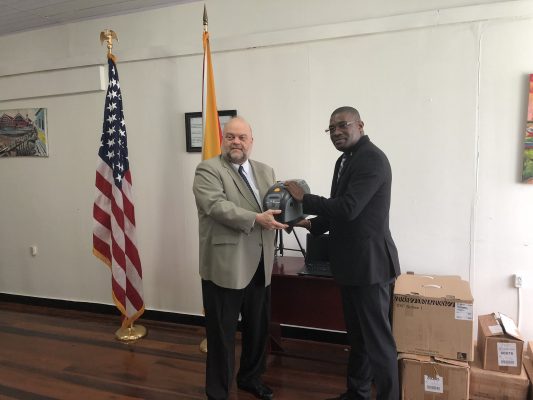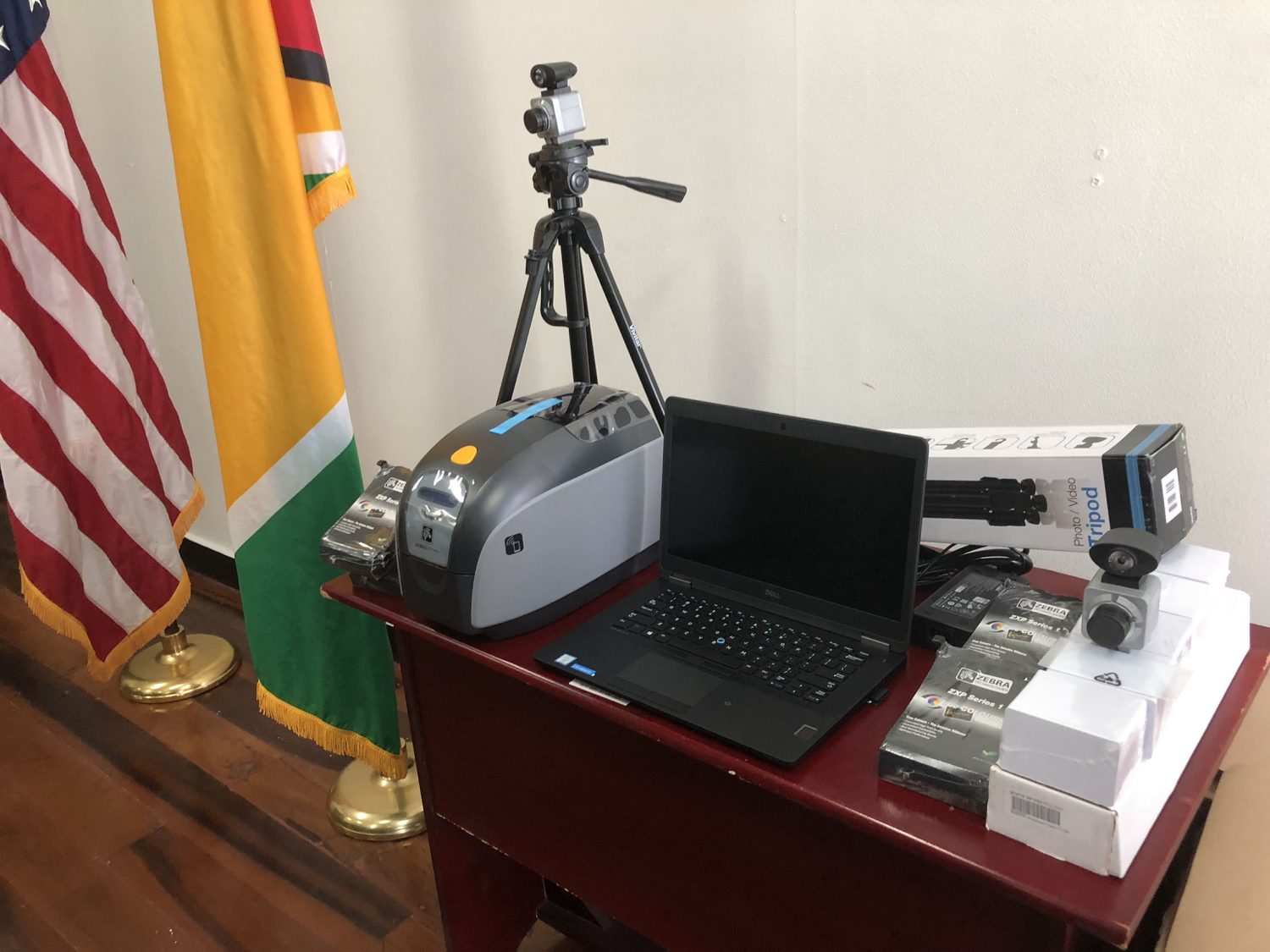Equipment for a port security identity card system was yesterday handed over by the United States to Guyana and it was revealed that MARAD’s compliance with international standards has seen an increase from 58% to 84%.
The ID card equipment was handed over at a simple ceremony at the Maritime Administration’s (MARAD) boardroom in Kingston, Georgetown.
Minister of Public Infrastructure David Patterson noted that following the 9/11 terrorist attack in the US in 2001, Guyana adopted the International Ship and Port Security (ISPS) code three years later and MARAD, which has responsibility for the implementation of the code, has been taking the necessary steps to improve security standards at the various ports over the years.

He said that in 2014 a team from MARAD visited the US Coast Guard in Louisiana, where they inspected the US Transportation Workers Identification Card System referred to as TWIC and also discussed how they could implement such a system at ports in Guyana.
US Ambassador to Guyana Perry Holloway told reporters that the equipment cost over US$8,000. Holloway said the equipment that was handed over will support MARAD’s implementation of the port security identification card programme. “This ID card programme will allow MARAD to have greater governmental oversight on who is allowed to access the International Ship and Port Facility Security Code-compliant facilities in Guyana. Once the equipment is installed, Guyana will have a port facility identification card programme similar to that used in the United States,” he explained.
Improved compliance
Holloway also noted that in August, 2014, five capacity-building events and four quarterly facility visits by US experts, including the US Coast Guard, at a cost of more than US$100,000, resulted in Guyana making significant improvements in its overall port security performance score.
Prior to the visits and capacity building events, Guyana had a 58% compliance with international standards and within a year that figure jumped to 84%.
“I commend everyone who has been part of these efforts to improve port security in Guyana and I am sure with this equipment and continued training, along with the commitment of the Ministry of Public Infrastructure, Guyana will continue to improve its performance scores and the people of Guyana will benefit,” Holloway added, while emphasising the US government’s commitment to “make Guyana a more secure, prosperous, and inclusive place for all Guyanese.”
Patterson said that the machine will produce identification cards for employees working at port facilities and will reduce the security checks for other stakeholders who frequent the ports. The system will also improve security standards with respect to access control and persons who want to become Port Security Officers will be required to complete four modules of training, including First Aid, Security Communications and Skill at Arms.
“MARAD will hold sensitisation programmes with owners and operators of the various port facilities before implementation,” he noted.
Head of MARAD Claudette Rogers, in brief remarks, noted that the visits by the US Coast Guard highlighted several weaknesses at the ports. She also noted that the developing oil and gas sector will not change anything since all the tools and techniques used are the same across all ports for all types of services.
Holloway also pointed out that the deficiencies surround three basic functions – monitoring, inspecting and reporting – which the training covers. “We spent a lot more money on technical assistance and training and visits. Electronics will help and are important but it’s really the human capital that will really matter in the end,” he added.






